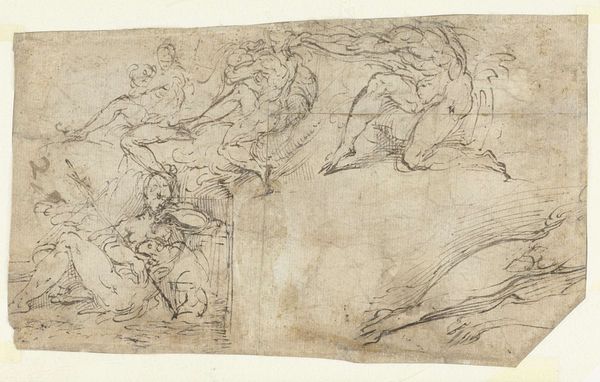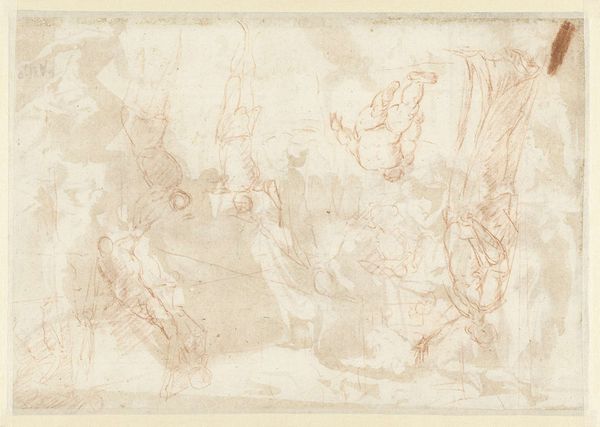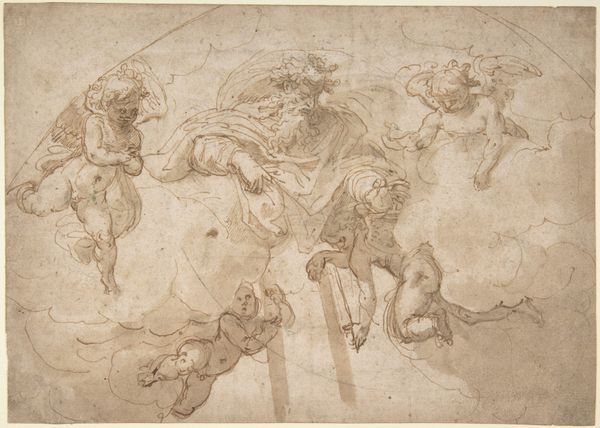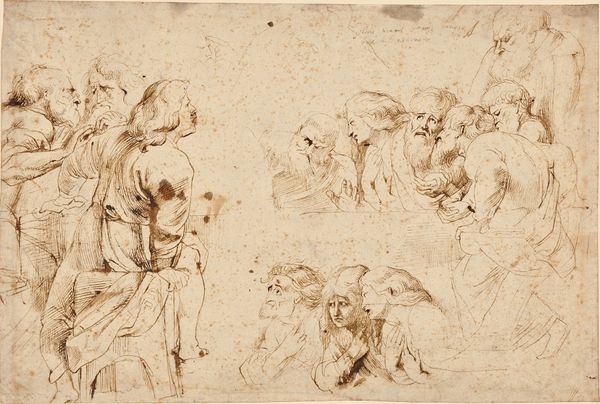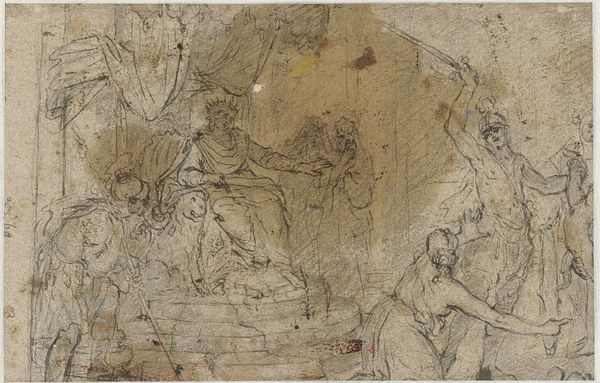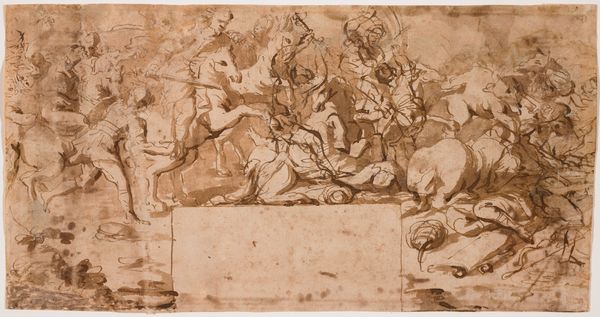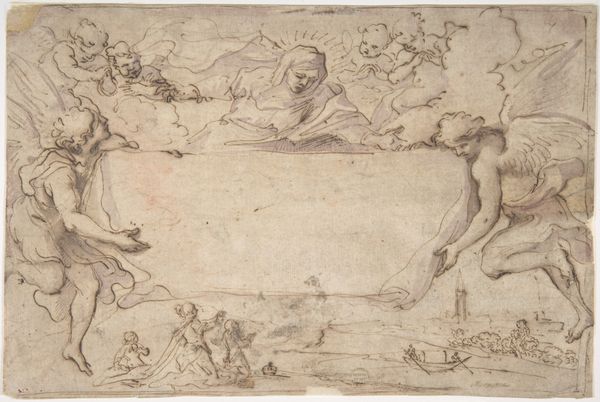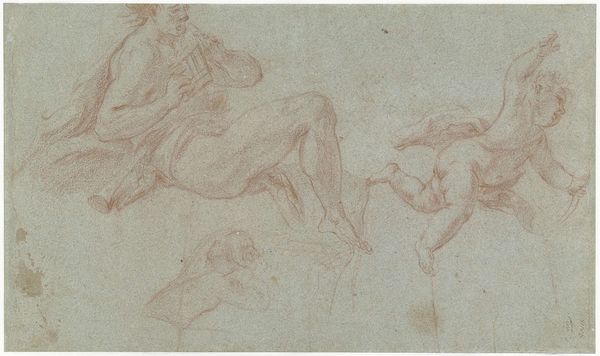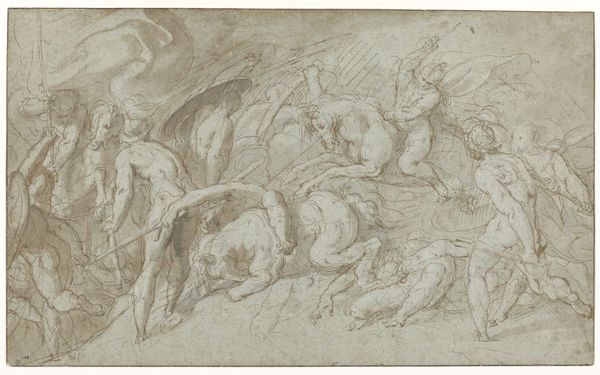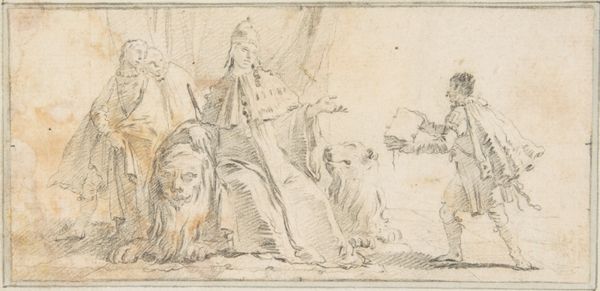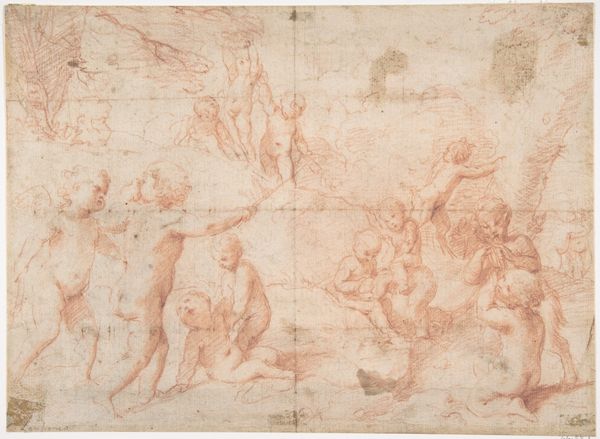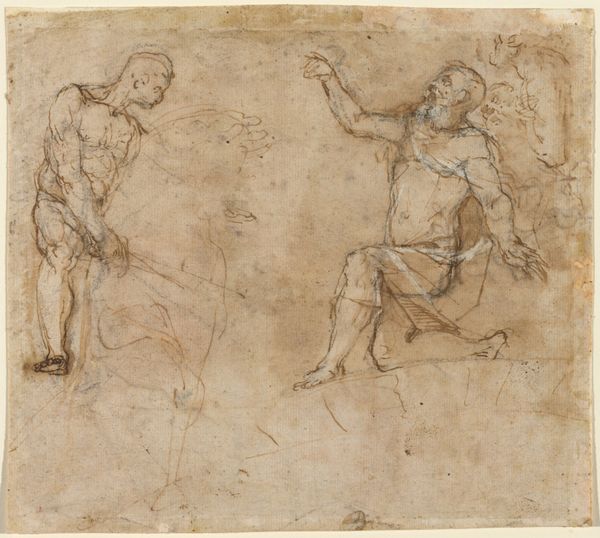
Schetsblad met verschillende composities, onder andere van twee handen 1635 - 1645
0:00
0:00
drawing, paper, ink, pen
#
portrait
#
drawing
#
ink painting
#
pencil sketch
#
paper
#
11_renaissance
#
ink
#
pen
Dimensions: height 205 mm, width 275 mm
Copyright: Rijks Museum: Open Domain
Curator: Before us is "Schetsblad met verschillende composities, onder andere van twee handen," a sketch sheet featuring various compositions, including two hands, crafted between 1635 and 1645 by Simone Cantarini. Editor: Ah, a palimpsest of potential! I love the energy, that flurry of ideas caught on paper. It feels… impulsive, almost like eavesdropping on Cantarini’s creative thought process. Curator: The use of pen and ink on paper lends a striking contrast to the delicacy of the figures sketched in what appears to be red chalk or sanguine. The study of hands in particular demands attention through its intricate hatching and carefully observed anatomy. Editor: Absolutely! Those hands are mesmerizing. One open in what seems like supplication or offering, the other gently curled. It's incredible how much character he captures with so few lines. But what strikes me more is that softness to the figures in the bottom right contrasted with the rigidity of the hands. The material quality is palpable—that rough paper, the bleed of the ink. It feels so intimate, like rifling through a genius’s private notebook. Curator: Note also the use of layering and spatial ambiguity. The composition is not a unified whole, but a series of discrete studies overlapping and intersecting with each other, creating a dynamic interplay of form and space. Cantarini appears to experiment with various perspectives and poses, showcasing his mastery of draftsmanship. Editor: That ambiguity is delicious! The overlapping figures create this hazy, dreamlike effect, which juxtaposes so beautifully with the firm lines of the hands. It’s as if the hands represent grounded intention and the figures stand for free floating creative fantasy, yeah? Like he is contrasting two opposing modes of expression. Curator: The artist utilizes the visual language of Renaissance art while subtly disrupting its conventions. It resists easy categorization. This very sheet prompts reflection upon the artistic process, that dance between idea and execution. Editor: Well said! I think what lingers with me is its incompleteness—the way it hints at possibilities never fully realized, that the space for something yet to be is palpable. Curator: Indeed. The dynamism here truly sparks the imagination and gives invaluable insight into an artist’s vision.
Comments
No comments
Be the first to comment and join the conversation on the ultimate creative platform.
